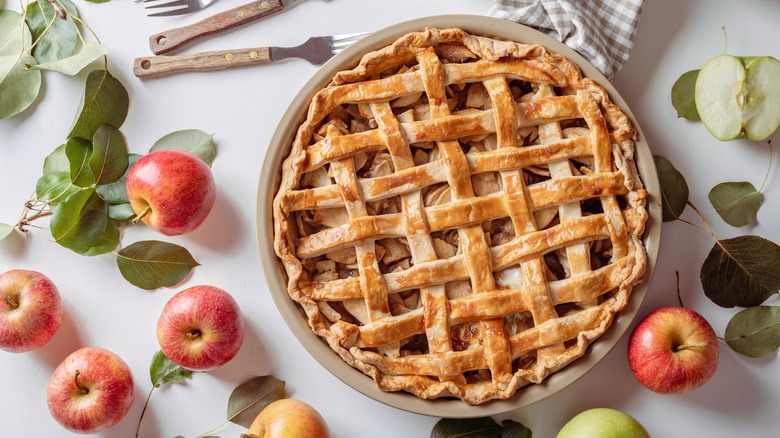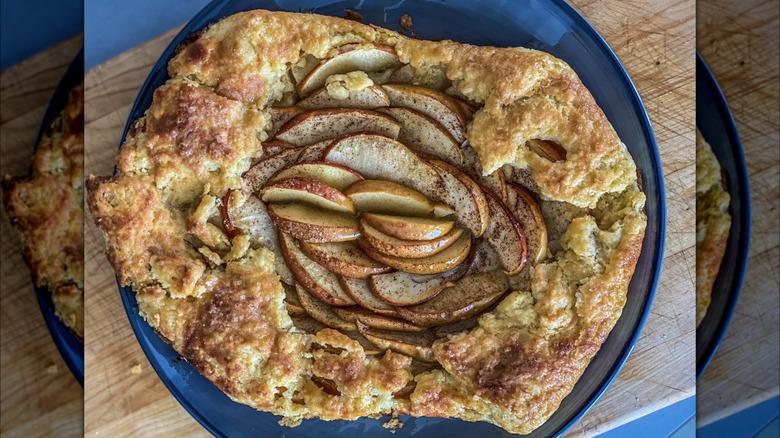How To Cut Apples For The Best Pies
There's a crisp chill in the air, summer shorts have made way for cozy sweaters, and a hearty stew sounds far more comforting than a light salad. You know what that means: It's peak apple season, and apple pie should absolutely be on the menu. After you've chosen the perfect apple pie recipe, picked your apples, and made your homemade pie crust, you're left with a very important question: How do I prepare these apples?
Your apples need to be cut in order to cook through, for a filling that is brimming with sweet, tender apples rather than tough ones. No matter the type of apple you're baking with, you'll have to peel, core, seed, and slice them, either into big chunks, thin slices, or a smaller dice. Depending on how you decide to cut your apples, the finished pie product will be different.
For a thicker apple chunk, dice your apple quarters crosswise. If you go this route, your pie may require a longer baking time in the oven to ensure a fully cooked-through filling. Plus, if your apple chunks are differently sized, they may end up being a little al dente: Less tender with some noticeable bite.
The way you cut your apple will impact the filling
There's no wrong answer on how to cut your apples, but different cuts are certainly best suited for different pie styles. The chunky filling route with a smaller, more even dice is excellent for a fried hand pie or a pie with a deep-dish crust. If you're really craving those larger, more rustic chunks, you'll get delicious results in a more casserole-style bake, like a baked apple crumb.
For a more even bake and tender apple filling, a thinly sliced apple is your best bet. To achieve this, slice your quarters lengthwise evenly into ¼ to ½ inch slices using your paring knife. We're not making applesauce here — you don't want your apples to be so paper thin that they turn into mush while baking. You want one that can still hold its shape in the filling, but when you take that bite, it melts in your mouth. This is the apple preparation you want for your traditional, full-sized pie.
Peeling versus not peeling comes down to a simple argument — removing the peel gives you delicate, soft apples while leaving the peel on will provide color and texture. However, leaving the peel on may prevent your apples from coming together while baking, resulting in tougher bites throughout. To peel or not to peel, the choice is completely up to you.

